SAF Commandos put mind over body to become ‘masters of stealth’
SINGAPORE — Often regarded with reverence by members of the public and donning red berets much coveted by pre-enlistees, the Army’s 1st Commando Battalion has again clinched the Best Combat Unit award in an annual military-wide competition, marking its 14th consecutive win.
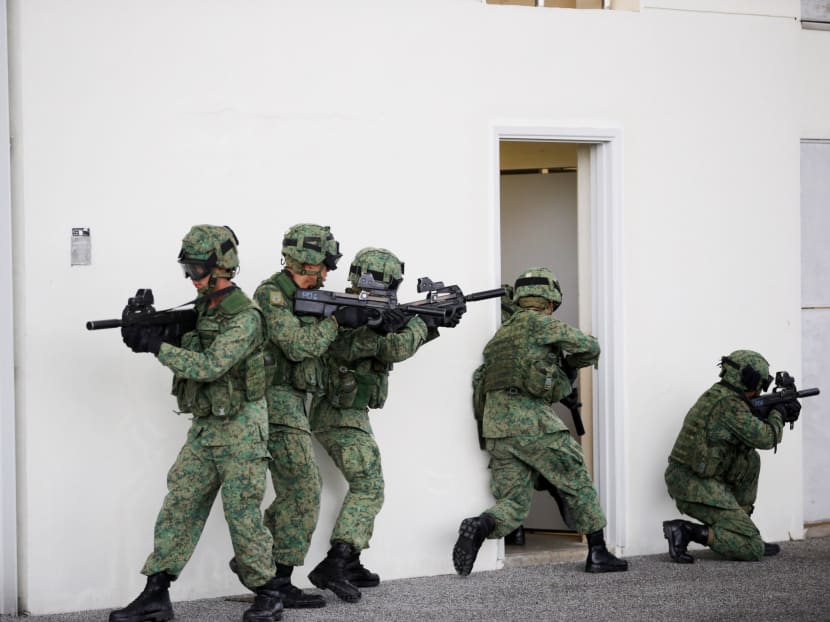
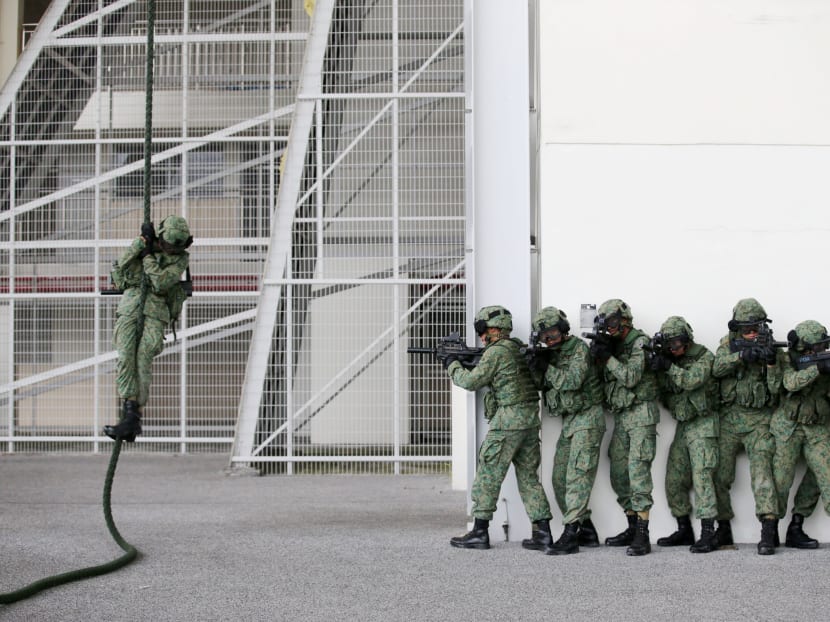
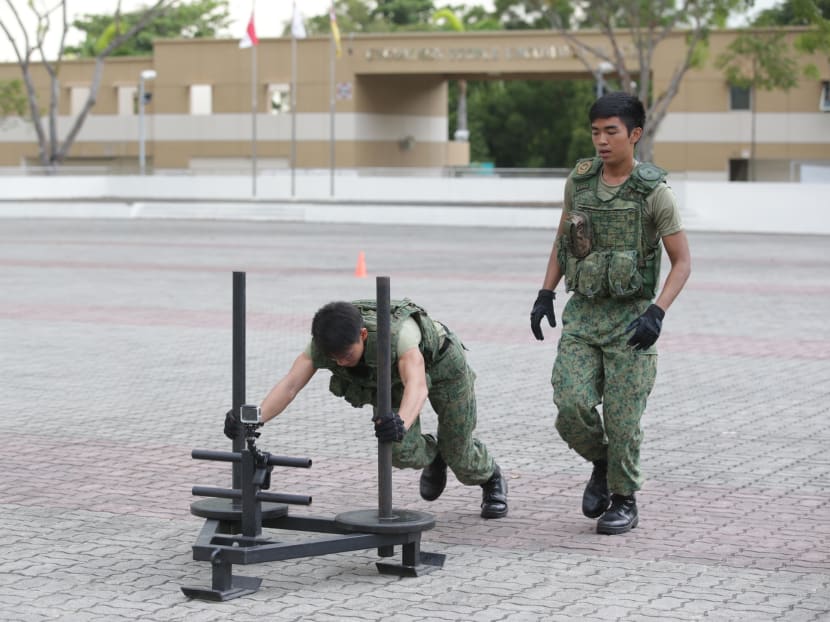
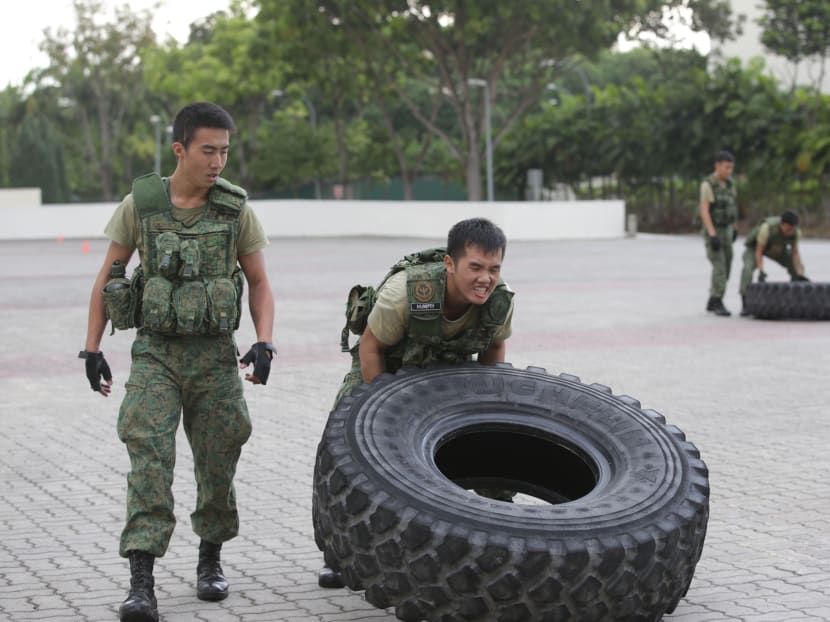
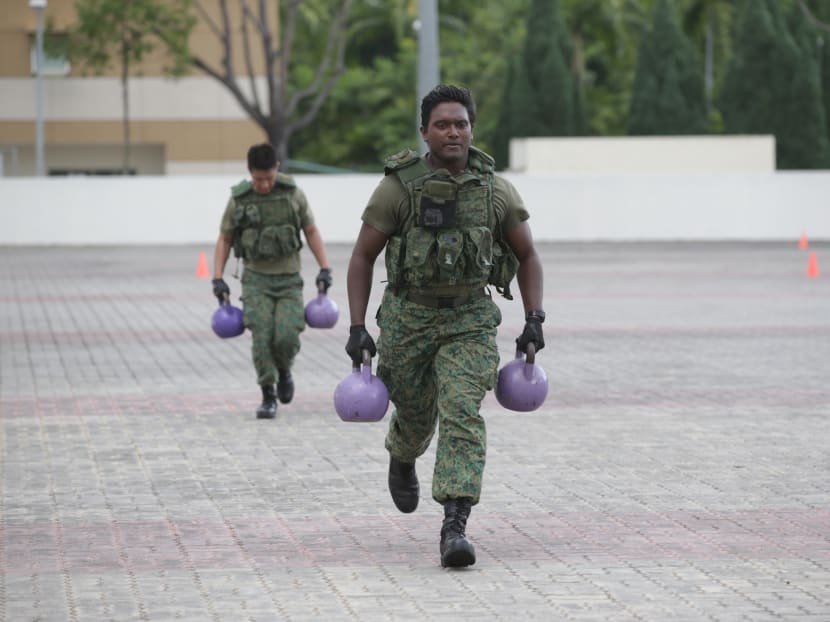
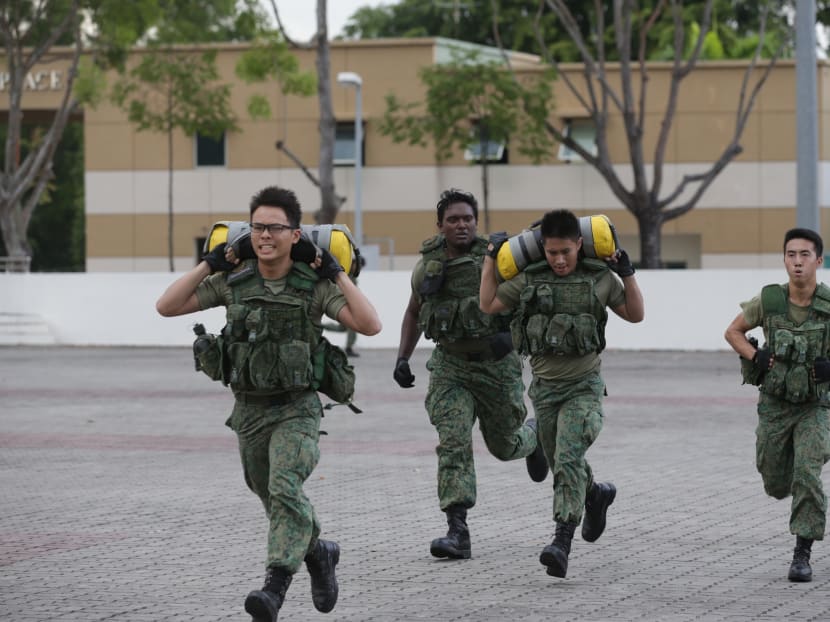
SINGAPORE — Often regarded with reverence by members of the public and donning red berets much coveted by pre-enlistees, the Army’s 1st Commando Battalion has again clinched the Best Combat Unit award in an annual military-wide competition, marking its 14th consecutive win.
But just what makes the Commandos — which has bagged the top honours an unprecedented 31 times since the competition started in 1969 — such a formidable force?
TODAY gets a glimpse of what these “masters of stealth” are made of by putting one of its very own, executive photojournalist Wee Teck Hian, through the quintessential Commando Challenge.
An avid ultra-marathoner and adventure hiker, the 48-year-old clocks between eight and 15 hours of trail running over various terrain each week, while shouldering up to 10kg of weight.
But the Commando Challenge — comprising four strength and endurance obstacles that participants complete in pairs or larger teams — proved a different ball game altogether.
What greeted Mr Wee as he rode into the Commando Training Institute in Pasir Ris on June 23 was an assembly of gear that more closely resembled Crossfit — a 120kg tractor tyre, four purple kettle bells weighing 20kg each, a push-sledge and two bright yellow sandbags.
Mr Wee was paired with full-time national serviceman (NSF) Corporal first class (CFC) Thaddaeus Koh, to compete against another NSF pair. Each pair had to finish the obstacle together before moving on to the next one.
Clad in standard battle order bearing some 5kg of arsenal, Mr Wee and CFC Koh started out strong, as they took turns at the sledge — with 20kg of weights attached — pushing it vigorously while dashing across the parade square.
Getting the 120kg tyre across the square next, through repeated lifts and flips, was probably the biggest hurdle for Mr Wee, whose training focuses more on gait and distance. Here, they started to lag behind their competitors.
Next came the kettle bells. Lifting 20kg in each hand, they were to run to-and-fro the parade square. It was also at this point where the distance between the two pairs drew further apart.
By the time Mr Wee reached the final obstacle, which involved running a 400m lap with a 15kg sandbag — a task he initially perceived as the “most doable” of the four — he was already exhausted.
“I thought that was most in line with my typical training regime, but by the time we got to that point, I hadn’t much strength left,” he told TODAY at the end of the challenge.
“This Commando Challenge is not something that anyone can do without the relevant training and conditioning. I haven’t felt my heart rate rise so quickly in many years. It’s tough also because you don’t get to slow down and take a breather. (Thaddaeus) helped me a lot,” he added.
Commando NSFs are put through the challenge as part of their physical training. It is also a centrepiece of an annual competitive event among the subunits. Participants sometimes nail the challenge in multiple pairs, each attempting just one obstacle.
Said Mr Wee: “That is why I am still very proud that I managed to complete the entire challenge with my partner. Furthermore, I am more than twice the age of these NSFs.”
.embed-container { position: relative; padding-bottom: 56.25%; height: 0; overflow: hidden; max-width: 100%; } .embed-container iframe, .embed-container object, .embed-container embed { position: absolute; top: 0; left: 0; width: 100%; height: 100%; }PHYSICAL AND TACTICAL TRAINING
Beyond the Commando Challenge, the men in red berets — who specialise in raids, reconnaissance and enemy interdiction via air, land and sea — undergo rigorous physical as well as tactical training to allow them to move fast and strike hard.
Full-time national serviceman Corporal (Cpl) Muhammad Haidhir Jasmani said: “Knowing the Commandos, I had expected the training to be tough. But when I entered the Commandos’ BMT (basic military training), it turned out to be probably three times tougher than I had expected.”
Unanimously, the most defining moments of the Commandos’ arduous training regime was the 800m swamp walk they were put through in a neighbouring country, operationally-ready servicemen (NSmen) told TODAY.
“It was the longest 800 metres of my life,” recalled project manager Lee Jin, whose team ran into the rainy season, and got stuck in the swamp overnight as they were unable to complete the mission within the stipulated time period. “Every single step was like walking on quicksand. We had to depend on one another to pull ourselves out and it smelt like rotten eggs throughout. We had only mosquitoes and sandflies for company through the night.”
iFly Singapore flight instructor Jordon Chan, 27, added: “It was really frustrating to navigate ourselves in the swamp while carrying a heavy load. Every step we took, we ended up taking more time to get out of the mud. I recall feeling frustrated whenever I held my team up.”
Said Mr Darrel Lim, who was an NSF between August 2013 and June 2015: “I think tough is an understatement. It was brutal! The training constantly gets tougher and tougher ... It does not really slow down, only until you are near your ORD (operationally-ready date).”
To help them fight on land and in other environments, Commandos are cross-trained in diverse skills such as weapon handling, demolition, signals, medical aid as well as parachuting — a feature they are well-known for among Singaporeans.
Fellow Singaporeans may know the Commandos best as the Red Lions gliding through the air at each year’s National Day Parade — a showcase of one of the stealthiest ways to infiltrate enemy territory.
Commando trainees must complete a basic airborne course spanning four weeks — where they are drilled in how to exit the aircraft and land in six different directions, among other things — before they can execute live jumps and earn the coveted “parachute wings”.
FALLING OUT
From the initial selection to basic training to making the cut as a fighter, the pool of Commandos keeps getting shaved at each stage as it is not uncommon for trainees to drop out for various reasons, said the Commandos interviewed by TODAY.
Mr Darrel Lim said he has seen a “fair share” of troopers who “gave up along the way”, or had to fall out during the injury.
Mr Lim’s batch started out 250 to 260-men strong, but at his ORD, less than 200 of them were left standing on the parade square.
Injury due to physical activities was the most common reason for people falling out, said internal auditor Chang Chia Jone, who served his NS with the Commandos between 2009 and 2010. “Other reasons include mishaps such as being stung by bees in the forest. I also had friends who were unable to fulfil course requirements such as physical tests or technical competencies,” he added.
And for those who managed to go the distance, mental tenacity is as key, or even more so, in pushing them through.
‘X-FACTOR’ GOES BEYOND MUSCLE AND NERVES
A tough training regime helps nurture physical fitness, but a “tougher mental state” is what really makes troopers, who come in all shapes and sizes, pull through the two years with the Commandos.
“People think that Commandos are big, strong and tough-looking, but in fact, some of them are just regular-looking guys. No one in their right mind would say I want to do a 72km route march in Full Battle Order, but we went on and did it … So I think what really sets us apart is our ability to push ourselves further and go beyond our limits,” said Mr Lim, referring to a milestone march which every Commando has to complete before earning his right to wear the coveted red beret.
“It’s true that when Singaporeans talk about Commandos, they think about people with high tolerance who do crazy things,” said Mr Chang, who noted that such perceptions may have been glamourised in the media.
Training with the Commandos is a test of mental strength, Cpl Haidhir reiterated. “Your body can heal, but your mind … when you are tired, you just cannot move. Your mind will get tougher over time. You just have to learn how to stay positive. I always look forward to the next time we can take a rest — that cheers me up.”
Cpl Haidhir was forced to confront his fear of heights during basic airborne training. “I used to be very afraid of heights … But I had to execute five airborne jumps to qualify as an airborne trooper. The moment my trainer presented me with the silver wings and certificate of accomplishment really signified that I had overcome something in my life — my fear.”
Mr Chang said: “Bashing through the forest in darkness for long hours over many nights can also be emotionally draining as you think of beautiful city lights and the comforts of your home.”
The 27-year-old added: “The anxiety of being lost in the forest at night, and being consistently yelled at and punished by instructors are things that we also had to persevere through.”
“The most common factor among Commandos — they call it the X-factor — is to have the spirit to push yourself beyond your limits. The muscles and nerves come after,” said Mr Lee, adding that he was “not very fit” when he was first drafted into the unit.
.embed-container { position: relative; padding-bottom: 56.25%; height: 0; overflow: hidden; max-width: 100%; } .embed-container iframe, .embed-container object, .embed-container embed { position: absolute; top: 0; left: 0; width: 100%; height: 100%; }BROTHERS FOR LIFE
Camaraderie is another key driver in overcoming these odds, said the Commandos.
Naming his teammates as one of the top motivators during rough training, Cpl Haidhir said: “The help I get from my buddies in camp (is invaluable). They really helped me to push on and not give up. Since they put so much trust in me, I also cannot give up. I have to push myself so that we, as a detachment, can move forward.”
Agreeing, fellow Commando NSF Anders Seah said: “To me, you just have to look at the people on your left and right ... There are people who are smaller than you, maybe not as physically strong as you … But they are still carrying the loads and walking the distance. If you give up, your load is passed on to another person.”
The fact that they work in small teams makes solidarity all the more important, he said.
“We only have one another … If one person were to fall out, it has a significant impact on our fighting strength,” said the 20-year-old.
Said Mr Lim: “We see each other grow from strength to strength, and we take care of one another. Only a Commando can know what another Commando has gone through, which is why there is such a unique identity in being a Commando.”
And this sense of brotherhood goes beyond the Commando Training Institute.
Commando NSmen told TODAY that every trooper who has graduated from Commando training will be added to a closed Facebook group named FHAG town, a reference to the unit’s motto “for honour and glory”, so that they can be notified of various activities and when fellow Commandos need support.
The Commandos share camaraderie that extends “throughout your life”, said Mr Lee.
“Even after NS, my Commando buddies have been there for me during significant events and emergencies, and I know they will be there throughout my life,” he said.
The rigorous two years’ National Service also set them up for future challenges in life, said the Commandos whom TODAY spoke to.
Mr Chan, for instance, said he continues to live with the “mind over body” attitude nurtured during his days donning the red beret.
He said: “Training often pushed us beyond our limits. But we were always taught to have our mind over body ... I continue to live by these values, being well-prepared and having a never-say-die attitude to see things through the end.”
With a chuckle, Mr Lee added: “Everything seems easier now ... For example, whenever I have to work overtime, I just compare it with the NS days, and I will not feel that bad.”






